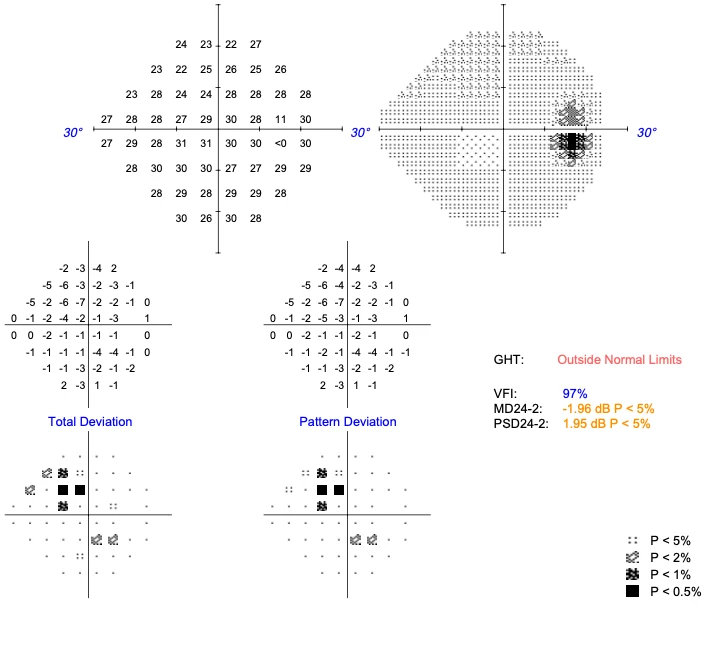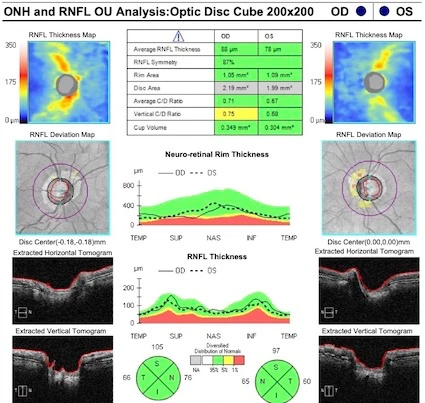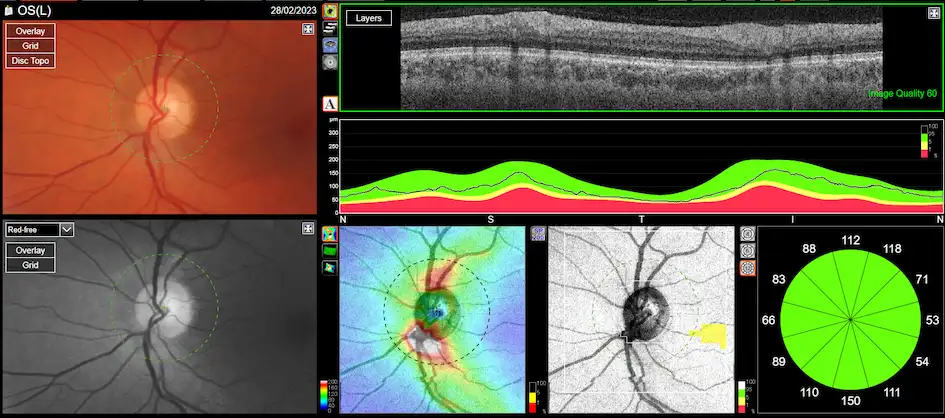There are four main types of glaucoma:
1-Primary open angle glaucoma
This is the most common type of glaucoma. It progresses very slowly and it is usually painless. It is called “open-angle” because the angle inside the eye containing the drainage area for fluid looks open when the eye is examined.
However, some people may develop glaucoma despite having normal eye pressure called Normal tension Glaucoma.
On the other hand, some people may have increased eye pressure but have no signs of glaucoma, called Ocular hypertension.
2-Angle closure glaucoma
This is a less common type that may occur in some people who have what is called narrow angle of the eye. On some occasions, the pressure can suddenly build up to a high level very quickly, called Acute Glaucoma or Acute Angle Closure Glaucoma. This is a very painful and serious condition. This is an eye emergency that required urgent review by an eye specialist.
Treatment consists of medications to lower the eye pressures, drops or medication by mouth or intravenous. This is followed by YAG laser peripheral iridotomy to prevent any further attacks.
3- Secondary glaucoma
This is glaucoma caused by another eye disease that may have led to increased eye pressure as chronic eye inflammation, previous eye surgery, diabetic eye diseases, retinal vein occlusion …etc.
4- Congenital glaucoma
This is rare but can be serious. It is usually present at birth or develops shortly after birth. It is caused by an abnormality of the eye.




